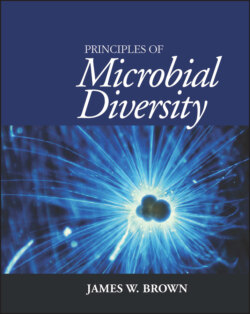Читать книгу Principles of Microbial Diversity - James W. Brown - Страница 43
Features required of a good molecular clock Clock-like behavior
ОглавлениеThe sequences of genes, RNAs, and proteins change over time. If this change is entirely random (within the constraint of the structure and function of the molecule; i.e., by genetic drift), the amount of divergence between any particular sequence in two organisms should be a measure of how long ago these organisms diverged from their common ancestor. If this is true, these sequences can be said to exhibit clock-like behavior (Fig. 3.1).
Clock-like behavior depends mostly on functional constancy of the sequence; a change in the function (or functional properties) leads to large, selected (and therefore nonrandom) sequence change, i.e., adaptation. Clock-like behavior also depends on the sequence being long enough to provide statistically significant information and being made up of a large number of independently evolving “bits” so that random changes in one part of the sequence do not influence changes in other parts of the sequence. The sequence must also have an appropriate amount of sequence variation; too little variation does not provide enough difference to be statistically meaningful, whereas too much makes alignment difficult or impossible and decreases the reliability of the treeing algorithm (see chapters 4 and 5 on evolutionary models). Nonfunctional sequences (e.g., some introns) usually change too fast for analysis except of the very closest of relatives.
Figure 3.1 Clock-like behavior. The extent of sequence divergence between a pair of specific sequences should be a measure of how long ago they separated. doi:10.1128/9781555818517.ch3.f3.1
Phylogenetic range
In order to be useful for a phylogenetic analysis, a sequence must be present and identifiable in all of the organisms to be analyzed and must exhibit clock-like behavior within this range. Watch out for gene families, because each member of the family is probably specialized for a slightly different function and it is often difficult to identify the correct ortholog or confirm that it really does have the same function.
Absence of horizontal transfer
Absence of horizontal transfer means that the gene must be acquired only by inheritance from parent to offspring, not by transfer from one organism to another except by descent. Examples of frequently horizontally transferred genes are those encoding antibiotic resistance, but any gene has the potential to be transferred horizontally. You can still generate a tree with sequences that have been horizontally transferred, but if the sequence is otherwise a good molecular clock, the resulting perfectly valid tree will reflect the phylogenetic relationships between the sequences but not the organisms that carry these sequences.
Availability of sequence information
It is of great pragmatic importance to choose a sequence, whenever possible, for which a great deal of the sequence data required is already available and annotated and perhaps already aligned. If you are interested in the phylogenetic placement of organism X, it is better if you do not have to obtain or identify the sequence data yourself for a large number of organisms to which it might (or might not) be related.
